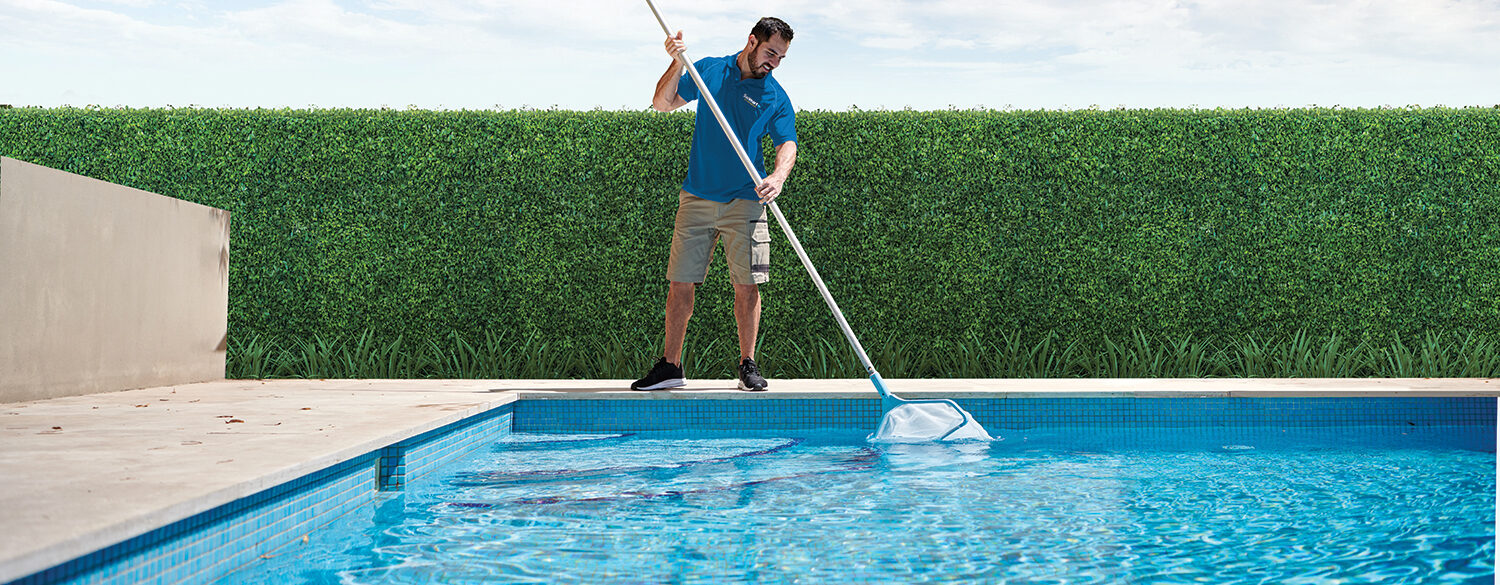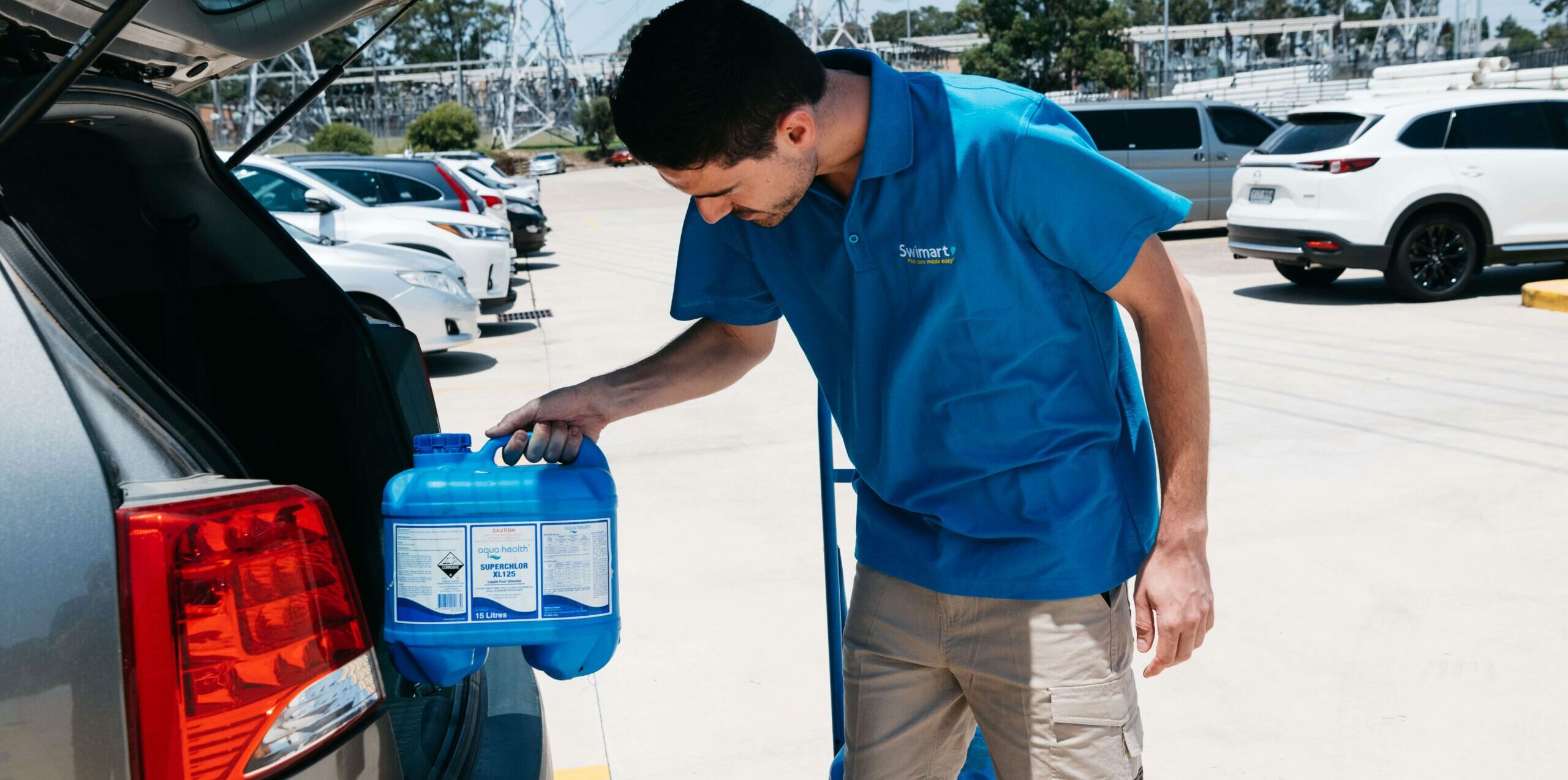DIY Tips
A garden oasis
4 March 2012
In order for a pool to blend naturally into the garden, careful planting of trees, shrubs, foliage plants, flowers and lawn will make your pool a visual delight without creating unnecessary work in the years to come.
A garden oasis
But there are a few things to keep in mind:
- Try to keep deciduous trees and tall shrubs well away from the pool area, as fallen flowers and leaf matter can overtax the filtration system
- To enable you have plenty of sun, make sure you don't plant tall trees on the northern side of the pool
- A lawn area in a sunny corner is a pleasant spot for sunbaking, but keep it at least 1.5m away from the pool, otherwise grass clippings can pollute the pool
- When you're designing a garden, make sure to choose the side of the pool which is out of the general traffic area
- Gardens near the pool should slope slightly away to prevent hosing and rainwater running into and fouling the pool
- For shady spots, plant low maintenance species such as palms, tree ferns, ferns, bromeliads and foliage plants. This can give a great tropical look – and these plants complement each other and enjoy the same growing conditions
- Surrounding a pool with a hedge planting of Lillypilly or Cupressu will act as windbreak to retard heat loss and wind evaporation to a pool area
- Incorporating waterwise plants with species endemic to your area will not only help create a hardy garden but also entice local flora and fauna to your property
- Allow for walkways around the perimeter of the pool
- Deep mulching your garden is an effective way to restrict water loss. An added benefit of mulch is that it mediates soil temperature (allowing plants to grow in the colder months) provides nutrients to the soil and retards weed growth.
Top planting tips for your pool
What to keep in mind
- Proximity to water 'splash' from the pool (be it chlorine or salt)
- Reflected sunlight from pool water and paving. This can intensify the heat on the plant and dramatically increase evaporation and salt leaching
- Plants with highly perfumed, bee attracting blooms in summer and autumn may affect the use of the pool
- In a windy location, large flowering plants can produce organic matter such as expired flower heads, seed pods and petals, which can end up in the pool, stain the paving and even make it slippery
- 'Spiky' pointed leaves on plants (as has been embraced in contemporary garden and courtyard design) may 'catch' children and adults as they move around pool paving and outdoor entertainment area
- The consideration of 'drought tolerance' in plants must be considered in light of Australia's water restrictions. Because light and heat intensity tend to be greater around pools, this drought tolerance becomes a higher priorit
Grass is greener
Wanting to enhance the value of your home? Apparently one of the keys is to make sure your lawn is in tip top condition!A recent survey of real estate agents by Turf Australia has revealed that Australian home buyers pay up to $75,000 for a lawn. Victorian lawns offer the highest value to a home (19%), with NSW not far behind at 16%, Queensland and South Australia at 12% and Western Australia 9%.And it has to be real grass, with 95% of home buyers preferring real grass over pavers, synthetic grass, decking and concrete.The survey also found that buyers believe a lawn adds to the look and feel of a home, while other respondents said buyers want a safe playing area for their children. Young couples and upsizers also believe in the benefits of grass, and 80% of buyers want a backyard to be at least 30% of their total property size.
Useful mowing tips from Victa:
- On hot days, mow in the late afternoon, not in the morning
- Never cut wet or dewy grass
- Don't water newly mown grass for at least 24 hours
- Water in the early morning rather than in the late afternoon or evening
- Never 'scalp' the grass by having the mower so low it removes all leaves and even cuts into the runners. This is particularly damaging to buffalo grass, but certainly not helpful for any variety. Keep grass height above 2.5cm from the soil
- Keep the lawn mower blades sharp
- Use a grass catcher during the cooler months
- Alternate the direction in which you mow each time you mow
- Conduct regular fertilising, irrigation and yearly renovations
- Consider doing a soil test once a year to test the pH of the soil
|
TEN WATER SAVING TIPS
- Talk to a licensed plumber about installing a rainwater tank. Check local council regulations as storage containers, such as slimline tanks, need to be securely installed.
- Use hardy plant species that have low water needs, such as cacti, succulents, or natives that have adapted to local conditions and are generally self-sufficient.
- Mulching prevents more than 70 per cent of moisture from evaporating from the soil, so spread woodchips or hay over flowerbeds and around trees.
- Use a grey water system to recycle wastewater from laundries and bathrooms to use elsewhere in the home and garden. Just remember that grey water may contain pollutants from cleaning products so consult a licensed plumber about your particular site.
- Install specialised water saving equipment such as drippers and timers to save you water and money. Timers should be regularly monitored to ensure they aren't leaking or watering too much and should be turned off after heavy rain.
- Use a water-efficient nozzle for your hose to release water at a highly reduced rate. Turn the hose off at the tap when you've finished watering to avoid leaks.
- Call a licensed plumber to repair water leaks as soon as they are detected.
- Use water crystals and water wetting agents to improve water absorption in your garden, particularly if it is already very dry. When the soil is dry, a strong crust can form, repelling water and increasing evaporation.
- Setting the blade higher on your mower – to at least seven centimetres – will shade grass roots as they grow deeper, which will in turn hold soil moisture more effectively.
- Contact your local council for further information on building sustainability and energy efficiency, including what rebates are available in your area.


 AUS
AUS NZ
NZ 


